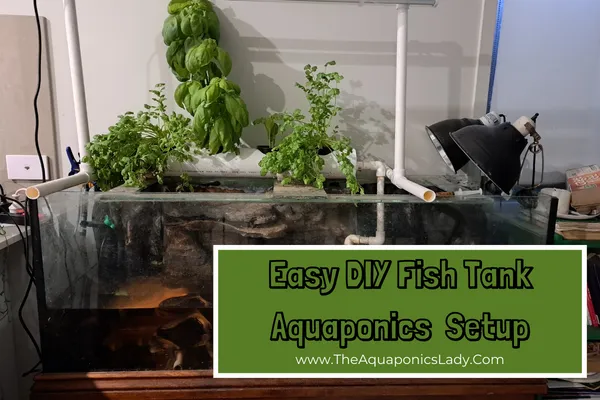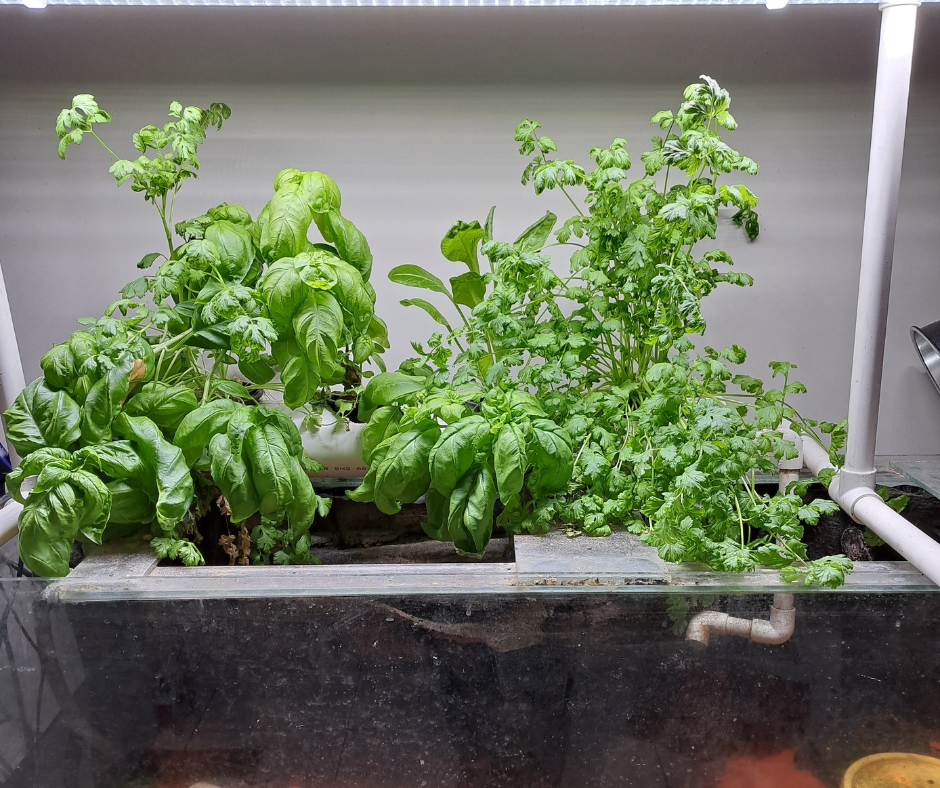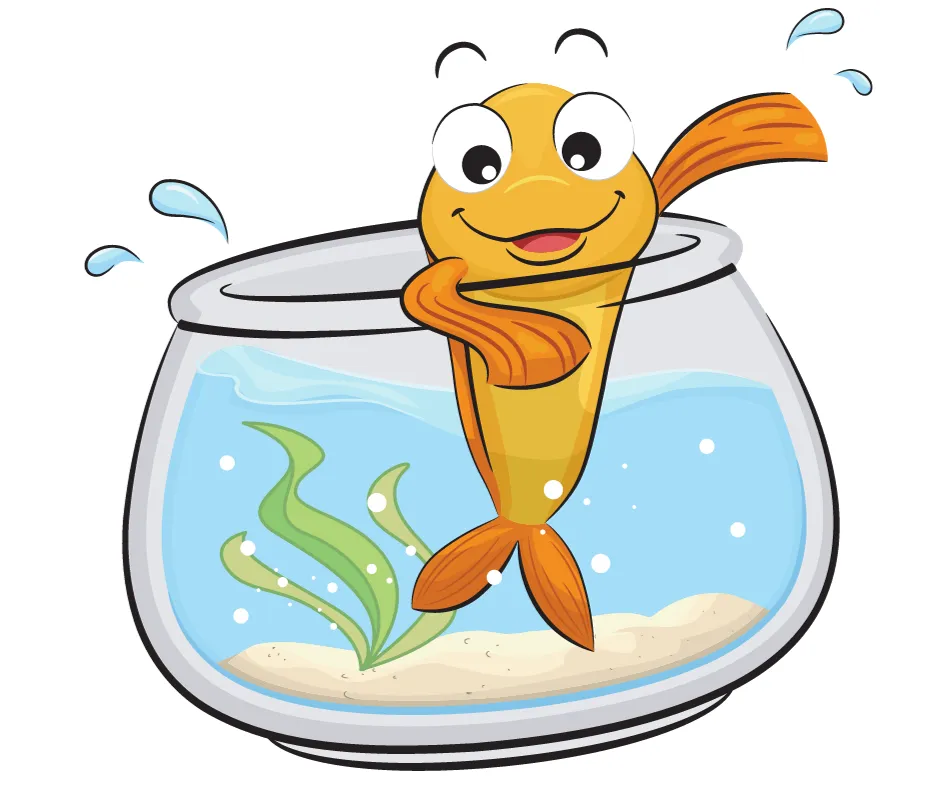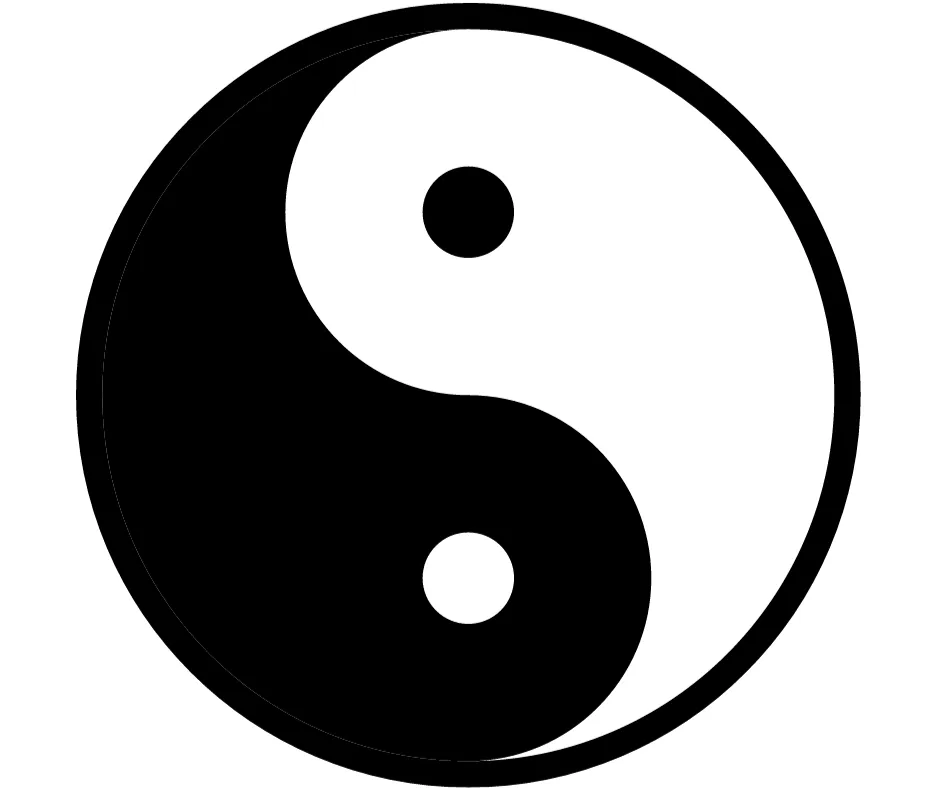





Aquaponics Blog Posts

Easy DIY Fish Tank Aquaponics Setup
Easy Aquaponics Fish Tank Setup
Setting up a Indoor Fish Tank Aquaponics System can be Super CHEAP and EASY
We don't usually look at our aquarium and think "I want to make you more functional" ~ We're not that practical.
Typically, peoples' thoughts (or mine) are based on justifying a 'want' but making it into a 'need'. Some common thoughts are;
"I love my aquarium, it is so relaxing. What would make it more relaxing?" I still think this is too practical, though.
Perhaps: "I've heard of aquaponics, maybe I can try in on my indoor aquarium?"
The more likely though is "I love my aquarium, but I'm tired of all the water changes... if only there was a way around that, to make it easier to look after." Holy catfish there is! It's called Aquaponics. You should give that a go.
Ok, so that one was REALLY me coming through there, but was there an inkling of truth to it?
Because that is what Fish Tank Aquaponics does, it can reduce your maintenance.

All of this basil and coriander (cilantro) was grown in my indoor aquaponics system, technically, my two turtles grew it ~ but it's the same concept.
Liquid fish (or turtle) waste (ammonia) fertilises the vegetables (and herbs) and the veggies filter the water for the fish.
It's a mini ecosystem in our own homes.
OK, it reduces the amount of water changes that you need to do!
Have a look at this video to see how my turtles do it.... you know, grow food
The parts of an aquaponics system
So here's the thing, if your not a seasoned aquarist, you need to know a couple of the basics to build a thriving aquaponics ecosystem.
Aquaponics is an ecosystem (as are fish tanks in general)
This means that they are different than hydroponics systems. In fact, when people say "hydroponic fish tank system" they are actually talking about aquaponics. And for that you need to understand how the ecosystem itself works. Check out THIS video to understand the ecosystem part.
It is also important to note that aquaponics is about finding balance in your ecosystem. You must balance the number of fish to the filtration and size of the tank, and the amount of plants to the amount of fertiliser available.
Another important point to note is; tap water kills the 'good' bacteria and fish in your system. You always need to dechlorinate tap water to make it safe for fish.
You need a fish tank... you know, as home for the fish.
This is the 'centrepiece' that we all love. Watching the fish, the relaxation part, the relationships with the fish. This is where we get really 'creative' with our creation. You can make your fish tank look as pretty as you like.
Mechanical filtration: basically, a fish toilet.
You need some way to collect the fish poop and any uneaten fish food from the system. In a fish tank for an indoor aquaponics system, this is commonly a 'gravel vacuum' that you do by hand with a suction hose.
If you get an actual aquarium filter, it will have a component that is a mechanical filter, but you will still need to suck up the solid waste from the tank. Very few filters will collect it all.
Biological filtration: what makes the ecosystem work.
This is the home of the 'nitrifying' bacteria, where the liquid waste (ammonia) is converted into nitrite, then nitrate (fertiliser for the plants).
The bacteria need a home. This can be a DIY filter, or various bought filters like a canister filter, sponge filter, or any of the water flowing filters.
The key here is to remember that you need to ensure that the water in your fish tank passes over the biological filter at ideally 5 times per hour.
This means if you have a 200L (52G) fish tank, the filter needs to be 1000L/ hr (1,000 litres per hour) or 264G/ hr (264 gallons per hour).
Pro tip: You can never have TOO MUCH biological filtration, but you can have TOO LITTLE
Veggie growing area: the place where you grow your veggies within the system.
I'll be honest, this is the area that I do cheap and easy to ensure that it works, then I 'pretty' it up. So many people spend a fortune when they don't need to. I start with the basics, ensure that the system works and I have the handle on it, then I 'upgrade it'.
The three most common veggie growing areas indoors are: growbeds, NFT channels (Nutrient Film Technique) and DWC (Deep Water Culture) rafts. Let's have a look at these options.
Growbed
This is commonly where you use gravel or expanded clay in a tub that supports the plants, their roots and often doubles up as the biological filter.
Water comes in from the fish tank, and filters through the clay, and out a stand pipe. If you do this, I would recommend a Constant Flow setup, not Flood and Drain (Ebb and Flow), and here's WHY.
It can get expensive though as expanded clay is really expensive, and if you buy gravel (so much cheaper), this makes the growbed heavier. Commonly, the growbed will sit above the fish tank so you need a stand that will hold the water and gravel.
On the plus side, the plants have good root depth and therefore greater stability within the growing area.

NFT channels
Commonly these are PVC piping that have the water come in one side, and drains out the other side of the PVC piping, with holes cut in the top of the pipe with nets for the plants to sit in.
The advantage is that this is a super cheap option for growing your veggies.
The roots are also kept away from the fishes, who often love to nibble at them.
However, you are limited in what you can grow as there is no gravel or clay to support the roots.

DWC (rafts)
It is so simple and easy to get a polystyrene lid, cut a hole in it and drop plant roots into a net cup and into the water, using the raft to float the cup and the plant.
Cheap an easy but it has it's limitations.
You need to choose your plants wisely as without enough raft space, the plant can lose its balance.
Also, in this setup the roots are often exposed to the fish. Many fish love to nibble the roots which may affect the health of the plant.

With these common vegetable growing methods, I am going to show you the cheap and easy NFT DIY build, as it has grown me heaps of herbs above 2 of my indoor fish tanks.
Check out My YouTube Channel 'Candy The Aquaponics Lady'
Aquaponics is an ecosystem, and with anything it takes time to learn how it works. So, sit back and binge watch my 'how to' playlist and the 'Water Quality Made Simple' Playlist, and learn the next steps in your aquaponics system as you create the ecosystem.
Want to get your Eyes and Hands on the FREE Online Aquaponics Essentials Course?
This is a great free resource to really understand how aquaponics is a sustainable ecosystem that will grow your organic food is a productive way.
You learn how all the 'parts' make up the 'whole', and helps to give you the foundations of understanding aquaponics.
Sign up HERE

Candy Alexander is a dedicated aquaponics enthusiast with a wealth of formal training in aquaculture. Over the past 15 years, Candy has been deeply immersed in both commercial and backyard aquaponics, honing her skills and expertise in this sustainable farming method.
Candy's passion lies in making aquaponics accessible to everyone. With a mission to simplify aquaponics, she believes that anyone can embark on this sustainable journey.
She encourages those new to aquaponics to "kick the tires" without a significant financial investment. Her guidance focuses on helping people start their aquaponics journey with small-scale systems, ensuring a low barrier to entry for newcomers.
Candy shares practical tips, step-by-step guides, and personal stories to inspire and guide readers on their aquaponics adventure. Whether you're a seasoned farmer or a curious beginner, Candy Alexander is your go-to source for simplifying aquaponics and fostering a sustainable gardening experience.
Gardening Blogs

Easy DIY Fish Tank Aquaponics Setup
Easy Aquaponics Fish Tank Setup
Setting up a Indoor Fish Tank Aquaponics System can be Super CHEAP and EASY
We don't usually look at our aquarium and think "I want to make you more functional" ~ We're not that practical.
Typically, peoples' thoughts (or mine) are based on justifying a 'want' but making it into a 'need'. Some common thoughts are;
"I love my aquarium, it is so relaxing. What would make it more relaxing?" I still think this is too practical, though.
Perhaps: "I've heard of aquaponics, maybe I can try in on my indoor aquarium?"
The more likely though is "I love my aquarium, but I'm tired of all the water changes... if only there was a way around that, to make it easier to look after." Holy catfish there is! It's called Aquaponics. You should give that a go.
Ok, so that one was REALLY me coming through there, but was there an inkling of truth to it?
Because that is what Fish Tank Aquaponics does, it can reduce your maintenance.

All of this basil and coriander (cilantro) was grown in my indoor aquaponics system, technically, my two turtles grew it ~ but it's the same concept.
Liquid fish (or turtle) waste (ammonia) fertilises the vegetables (and herbs) and the veggies filter the water for the fish.
It's a mini ecosystem in our own homes.
OK, it reduces the amount of water changes that you need to do!
Have a look at this video to see how my turtles do it.... you know, grow food
The parts of an aquaponics system
So here's the thing, if your not a seasoned aquarist, you need to know a couple of the basics to build a thriving aquaponics ecosystem.
Aquaponics is an ecosystem (as are fish tanks in general)
This means that they are different than hydroponics systems. In fact, when people say "hydroponic fish tank system" they are actually talking about aquaponics. And for that you need to understand how the ecosystem itself works. Check out THIS video to understand the ecosystem part.
It is also important to note that aquaponics is about finding balance in your ecosystem. You must balance the number of fish to the filtration and size of the tank, and the amount of plants to the amount of fertiliser available.
Another important point to note is; tap water kills the 'good' bacteria and fish in your system. You always need to dechlorinate tap water to make it safe for fish.
You need a fish tank... you know, as home for the fish.
This is the 'centrepiece' that we all love. Watching the fish, the relaxation part, the relationships with the fish. This is where we get really 'creative' with our creation. You can make your fish tank look as pretty as you like.
Mechanical filtration: basically, a fish toilet.
You need some way to collect the fish poop and any uneaten fish food from the system. In a fish tank for an indoor aquaponics system, this is commonly a 'gravel vacuum' that you do by hand with a suction hose.
If you get an actual aquarium filter, it will have a component that is a mechanical filter, but you will still need to suck up the solid waste from the tank. Very few filters will collect it all.
Biological filtration: what makes the ecosystem work.
This is the home of the 'nitrifying' bacteria, where the liquid waste (ammonia) is converted into nitrite, then nitrate (fertiliser for the plants).
The bacteria need a home. This can be a DIY filter, or various bought filters like a canister filter, sponge filter, or any of the water flowing filters.
The key here is to remember that you need to ensure that the water in your fish tank passes over the biological filter at ideally 5 times per hour.
This means if you have a 200L (52G) fish tank, the filter needs to be 1000L/ hr (1,000 litres per hour) or 264G/ hr (264 gallons per hour).
Pro tip: You can never have TOO MUCH biological filtration, but you can have TOO LITTLE
Veggie growing area: the place where you grow your veggies within the system.
I'll be honest, this is the area that I do cheap and easy to ensure that it works, then I 'pretty' it up. So many people spend a fortune when they don't need to. I start with the basics, ensure that the system works and I have the handle on it, then I 'upgrade it'.
The three most common veggie growing areas indoors are: growbeds, NFT channels (Nutrient Film Technique) and DWC (Deep Water Culture) rafts. Let's have a look at these options.
Growbed
This is commonly where you use gravel or expanded clay in a tub that supports the plants, their roots and often doubles up as the biological filter.
Water comes in from the fish tank, and filters through the clay, and out a stand pipe. If you do this, I would recommend a Constant Flow setup, not Flood and Drain (Ebb and Flow), and here's WHY.
It can get expensive though as expanded clay is really expensive, and if you buy gravel (so much cheaper), this makes the growbed heavier. Commonly, the growbed will sit above the fish tank so you need a stand that will hold the water and gravel.
On the plus side, the plants have good root depth and therefore greater stability within the growing area.

NFT channels
Commonly these are PVC piping that have the water come in one side, and drains out the other side of the PVC piping, with holes cut in the top of the pipe with nets for the plants to sit in.
The advantage is that this is a super cheap option for growing your veggies.
The roots are also kept away from the fishes, who often love to nibble at them.
However, you are limited in what you can grow as there is no gravel or clay to support the roots.

DWC (rafts)
It is so simple and easy to get a polystyrene lid, cut a hole in it and drop plant roots into a net cup and into the water, using the raft to float the cup and the plant.
Cheap an easy but it has it's limitations.
You need to choose your plants wisely as without enough raft space, the plant can lose its balance.
Also, in this setup the roots are often exposed to the fish. Many fish love to nibble the roots which may affect the health of the plant.

With these common vegetable growing methods, I am going to show you the cheap and easy NFT DIY build, as it has grown me heaps of herbs above 2 of my indoor fish tanks.
Check out My YouTube Channel 'Candy The Aquaponics Lady'
Aquaponics is an ecosystem, and with anything it takes time to learn how it works. So, sit back and binge watch my 'how to' playlist and the 'Water Quality Made Simple' Playlist, and learn the next steps in your aquaponics system as you create the ecosystem.
Want to get your Eyes and Hands on the FREE Online Aquaponics Essentials Course?
This is a great free resource to really understand how aquaponics is a sustainable ecosystem that will grow your organic food is a productive way.
You learn how all the 'parts' make up the 'whole', and helps to give you the foundations of understanding aquaponics.
Sign up HERE

Candy Alexander is a dedicated aquaponics enthusiast with a wealth of formal training in aquaculture. Over the past 15 years, Candy has been deeply immersed in both commercial and backyard aquaponics, honing her skills and expertise in this sustainable farming method.
Candy's passion lies in making aquaponics accessible to everyone. With a mission to simplify aquaponics, she believes that anyone can embark on this sustainable journey.
She encourages those new to aquaponics to "kick the tires" without a significant financial investment. Her guidance focuses on helping people start their aquaponics journey with small-scale systems, ensuring a low barrier to entry for newcomers.
Candy shares practical tips, step-by-step guides, and personal stories to inspire and guide readers on their aquaponics adventure. Whether you're a seasoned farmer or a curious beginner, Candy Alexander is your go-to source for simplifying aquaponics and fostering a sustainable gardening experience.
Garden Therapy with Aquaponics Blogs Below

Easy DIY Fish Tank Aquaponics Setup
Easy Aquaponics Fish Tank Setup
Setting up a Indoor Fish Tank Aquaponics System can be Super CHEAP and EASY
We don't usually look at our aquarium and think "I want to make you more functional" ~ We're not that practical.
Typically, peoples' thoughts (or mine) are based on justifying a 'want' but making it into a 'need'. Some common thoughts are;
"I love my aquarium, it is so relaxing. What would make it more relaxing?" I still think this is too practical, though.
Perhaps: "I've heard of aquaponics, maybe I can try in on my indoor aquarium?"
The more likely though is "I love my aquarium, but I'm tired of all the water changes... if only there was a way around that, to make it easier to look after." Holy catfish there is! It's called Aquaponics. You should give that a go.
Ok, so that one was REALLY me coming through there, but was there an inkling of truth to it?
Because that is what Fish Tank Aquaponics does, it can reduce your maintenance.

All of this basil and coriander (cilantro) was grown in my indoor aquaponics system, technically, my two turtles grew it ~ but it's the same concept.
Liquid fish (or turtle) waste (ammonia) fertilises the vegetables (and herbs) and the veggies filter the water for the fish.
It's a mini ecosystem in our own homes.
OK, it reduces the amount of water changes that you need to do!
Have a look at this video to see how my turtles do it.... you know, grow food
The parts of an aquaponics system
So here's the thing, if your not a seasoned aquarist, you need to know a couple of the basics to build a thriving aquaponics ecosystem.
Aquaponics is an ecosystem (as are fish tanks in general)
This means that they are different than hydroponics systems. In fact, when people say "hydroponic fish tank system" they are actually talking about aquaponics. And for that you need to understand how the ecosystem itself works. Check out THIS video to understand the ecosystem part.
It is also important to note that aquaponics is about finding balance in your ecosystem. You must balance the number of fish to the filtration and size of the tank, and the amount of plants to the amount of fertiliser available.
Another important point to note is; tap water kills the 'good' bacteria and fish in your system. You always need to dechlorinate tap water to make it safe for fish.
You need a fish tank... you know, as home for the fish.
This is the 'centrepiece' that we all love. Watching the fish, the relaxation part, the relationships with the fish. This is where we get really 'creative' with our creation. You can make your fish tank look as pretty as you like.
Mechanical filtration: basically, a fish toilet.
You need some way to collect the fish poop and any uneaten fish food from the system. In a fish tank for an indoor aquaponics system, this is commonly a 'gravel vacuum' that you do by hand with a suction hose.
If you get an actual aquarium filter, it will have a component that is a mechanical filter, but you will still need to suck up the solid waste from the tank. Very few filters will collect it all.
Biological filtration: what makes the ecosystem work.
This is the home of the 'nitrifying' bacteria, where the liquid waste (ammonia) is converted into nitrite, then nitrate (fertiliser for the plants).
The bacteria need a home. This can be a DIY filter, or various bought filters like a canister filter, sponge filter, or any of the water flowing filters.
The key here is to remember that you need to ensure that the water in your fish tank passes over the biological filter at ideally 5 times per hour.
This means if you have a 200L (52G) fish tank, the filter needs to be 1000L/ hr (1,000 litres per hour) or 264G/ hr (264 gallons per hour).
Pro tip: You can never have TOO MUCH biological filtration, but you can have TOO LITTLE
Veggie growing area: the place where you grow your veggies within the system.
I'll be honest, this is the area that I do cheap and easy to ensure that it works, then I 'pretty' it up. So many people spend a fortune when they don't need to. I start with the basics, ensure that the system works and I have the handle on it, then I 'upgrade it'.
The three most common veggie growing areas indoors are: growbeds, NFT channels (Nutrient Film Technique) and DWC (Deep Water Culture) rafts. Let's have a look at these options.
Growbed
This is commonly where you use gravel or expanded clay in a tub that supports the plants, their roots and often doubles up as the biological filter.
Water comes in from the fish tank, and filters through the clay, and out a stand pipe. If you do this, I would recommend a Constant Flow setup, not Flood and Drain (Ebb and Flow), and here's WHY.
It can get expensive though as expanded clay is really expensive, and if you buy gravel (so much cheaper), this makes the growbed heavier. Commonly, the growbed will sit above the fish tank so you need a stand that will hold the water and gravel.
On the plus side, the plants have good root depth and therefore greater stability within the growing area.

NFT channels
Commonly these are PVC piping that have the water come in one side, and drains out the other side of the PVC piping, with holes cut in the top of the pipe with nets for the plants to sit in.
The advantage is that this is a super cheap option for growing your veggies.
The roots are also kept away from the fishes, who often love to nibble at them.
However, you are limited in what you can grow as there is no gravel or clay to support the roots.

DWC (rafts)
It is so simple and easy to get a polystyrene lid, cut a hole in it and drop plant roots into a net cup and into the water, using the raft to float the cup and the plant.
Cheap an easy but it has it's limitations.
You need to choose your plants wisely as without enough raft space, the plant can lose its balance.
Also, in this setup the roots are often exposed to the fish. Many fish love to nibble the roots which may affect the health of the plant.

With these common vegetable growing methods, I am going to show you the cheap and easy NFT DIY build, as it has grown me heaps of herbs above 2 of my indoor fish tanks.
Check out My YouTube Channel 'Candy The Aquaponics Lady'
Aquaponics is an ecosystem, and with anything it takes time to learn how it works. So, sit back and binge watch my 'how to' playlist and the 'Water Quality Made Simple' Playlist, and learn the next steps in your aquaponics system as you create the ecosystem.
Want to get your Eyes and Hands on the FREE Online Aquaponics Essentials Course?
This is a great free resource to really understand how aquaponics is a sustainable ecosystem that will grow your organic food is a productive way.
You learn how all the 'parts' make up the 'whole', and helps to give you the foundations of understanding aquaponics.
Sign up HERE

Candy Alexander is a dedicated aquaponics enthusiast with a wealth of formal training in aquaculture. Over the past 15 years, Candy has been deeply immersed in both commercial and backyard aquaponics, honing her skills and expertise in this sustainable farming method.
Candy's passion lies in making aquaponics accessible to everyone. With a mission to simplify aquaponics, she believes that anyone can embark on this sustainable journey.
She encourages those new to aquaponics to "kick the tires" without a significant financial investment. Her guidance focuses on helping people start their aquaponics journey with small-scale systems, ensuring a low barrier to entry for newcomers.
Candy shares practical tips, step-by-step guides, and personal stories to inspire and guide readers on their aquaponics adventure. Whether you're a seasoned farmer or a curious beginner, Candy Alexander is your go-to source for simplifying aquaponics and fostering a sustainable gardening experience.

The relaxation you feel when your garden is well known. Aquaponics brings a deeper sense of calm as it connects you with the relaxation of fish as well.

Seeing the miracles of nature happening within your aquaponics system gives you a sense of wonder and excitement.

As everything about aquaponics is based on balance, it gives you the physical representation of balance to connect to when you feel overwhelmed by life.
I use aquaponics as a form of garden therapy to help me manage PTSD,
anxiety, depression, and autism.
Have you been thinking about a deeper meaning in life?
Aquaponics can show you this perfectly!
Check out the article below on how I manage my anxiety with aquaponics:
Managing My "Anxiety Octopus" with Aquaponics
Copyright 2023 | Candy The Aquaponics Lady | All Rights Reserved Email: ask@theaquaponicslady.com Queensland, Australia

Youtube
Facebook
Instagram
LinkedIn
TikTok